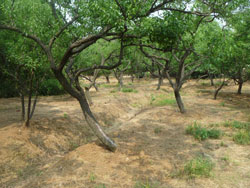 Zachary Larson, Borlaug Summer Intern, is on location at Nanjing Agricultural University and providing us with updates this summer of his trip. Here’s his latest. You can also find a photo album he’s got started here: Borlaug Summer Intern Photo Album. The internship is being sponsored by the Iowa State University Plant Sciences Institute.
Zachary Larson, Borlaug Summer Intern, is on location at Nanjing Agricultural University and providing us with updates this summer of his trip. Here’s his latest. You can also find a photo album he’s got started here: Borlaug Summer Intern Photo Album. The internship is being sponsored by the Iowa State University Plant Sciences Institute.
It has been been two weeks since I last sat down and wrote a blog post and these last 2-3 weeks have had their share of incredible, awkward, and sometimes down right boring moments.
A short time ago I had the enlightening experience of traveling to a rural village in Southern Jiangsu Province that was the hometown of my Teacher (Xing Laoshi). This village, and its people, have been here for a long time, and as far as its history goes, it has changed little until recently (1980s). As for the village itself, there is a main road that stretches through a central shopping district, and smaller roads extending out fro m this main road. At about half a mile down one of these roads, the road gave away to a series of small fields, and from there on lay a small series of houses together, and more fields.
The houses and road makeup themselves make one suspect that this area has changed little in the past decades, but more and more, the entire area is ringed by different series of factories, and so despite some buildings having stood for centuries, the area around the village has quickly changed and shows the incredible development of Jiangsu Province.
Beyond this, my time in this village was incredible for the day I was able to stay. As far as hospitality goes, nothing quite compares to a meal made home grown eggs, vegetables, etc. While not everything was not completely home made, the amount of food that Xing Laoshi’s parents were able to grow and prepare on their own using just a small amount of land was quite amazing, and having the opportunity to eat this was perhaps the best part of the trip to this village.
Beyond the food, just having the chance meet the people here and talk to them was a great opportunity to learn a little about them, and Xing Laoshi. As this is still semi rural China, English was completely out of the question, so I had to rely on my Mandarin (Putonghua). Everyone in the village can speak this, but the village also has its own language (Chinese dialect) that they can use. This particular dialect was extremely fast, and sounded much more like Japanese than Chinese! But, I was still able to get most of my thoughts expressed despite and learn a bit.
As is common for most of China, the villagers were either rather old, or there very young children, and few in between. My own teacher had left his village to come to Nanjing, and now only his small cousins are left of all the children. Despite this, there is still plenty of activity with in the fields, and altogether the village grows anything from watermelons to wheat stalks. I only had about half a day to actually view some of their field practices, and the practice that intrigued me the most is that as the farmers were finishing the wheat harvest, the refuse was completely burned, plowed under, and then tilled for the coming rice harvest. While this practice is inherently had for the environment, given the size of fields in China, it is a widespread practice.
It was a good experience for me to travel out to this area of rural Jiangsu province, and hopefully I can make it back before I head back to the U.S
